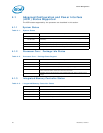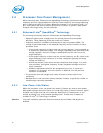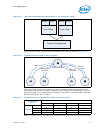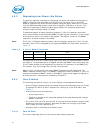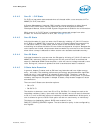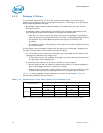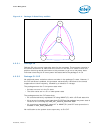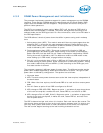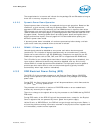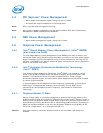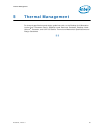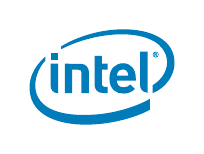
Power Management
56 Datasheet, Volume 1
4.2.5.3 Package C3 State
A processor enters the package C3 low power state when:
• At least one core is in the C3 state
• The other cores are in a C3 or lower power state, and the processor has been
granted permission by the platform
• The platform has not granted a request to a package C6 state but has allowed a
package C6 state
In package C3-state, the L3 shared cache is valid.
4.2.5.4 Package C6 State
A processor enters the package C6 low power state when:
• At least one core is in the C6 state
• The other cores are in a C6 or lower power state and the processor has been
granted permission by the platform
In package C6 state, all cores have saved their architectural state and have had their
core voltages reduced to zero volts. The L3 shared cache is still powered and snoopable
in this state. The processor remains in package C6 state as long as any part of the L3
cache is active.
4.3 Integrated Memory Controller (IMC) Power
Management
The main memory is power managed during normal operation and in low-power ACPI
Cx states.
4.3.1 Disabling Unused System Memory Outputs
Any System Memory (SM) interface signal that goes to a memory module connector in
which it is not connected to any actual memory devices (such as SO-DIMM connector is
unpopulated, or is single-sided) is tri-stated. The benefits of disabling unused SM
signals are:
• Reduced power consumption
• Reduced possible overshoot/undershoot signal quality issues seen by the processor
I/O buffer receivers caused by reflections from potentially un-terminated
transmission lines
When a given rank is not populated, the corresponding chip select and CKE signals are
not driven.
At reset, all rows must be assumed to be populated, until it can be proven that they are
not populated. This is due to the fact that when CKE is tri-stated with a SO-DIMM
present, the SO-DIMM is not ensured to maintain data integrity.
SCKE tri-state should be enabled by BIOS where appropriate, since at reset all rows
must be assumed to be populated.



